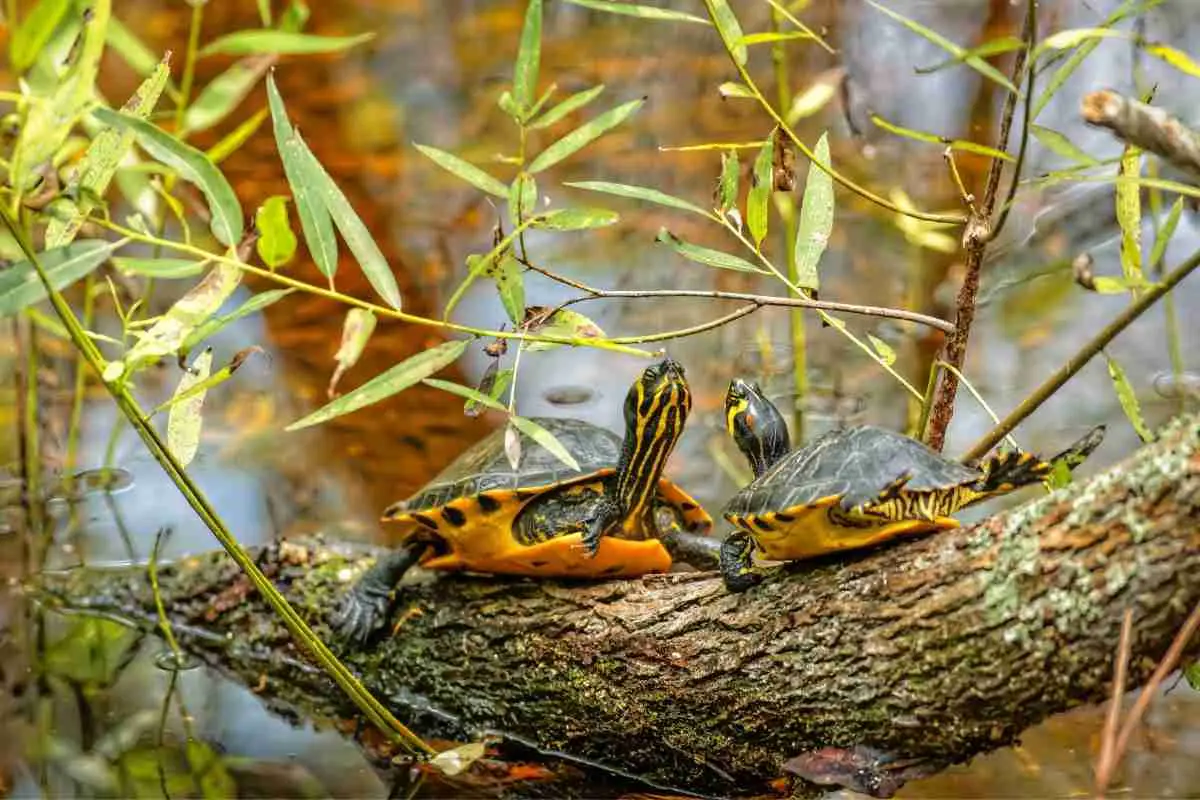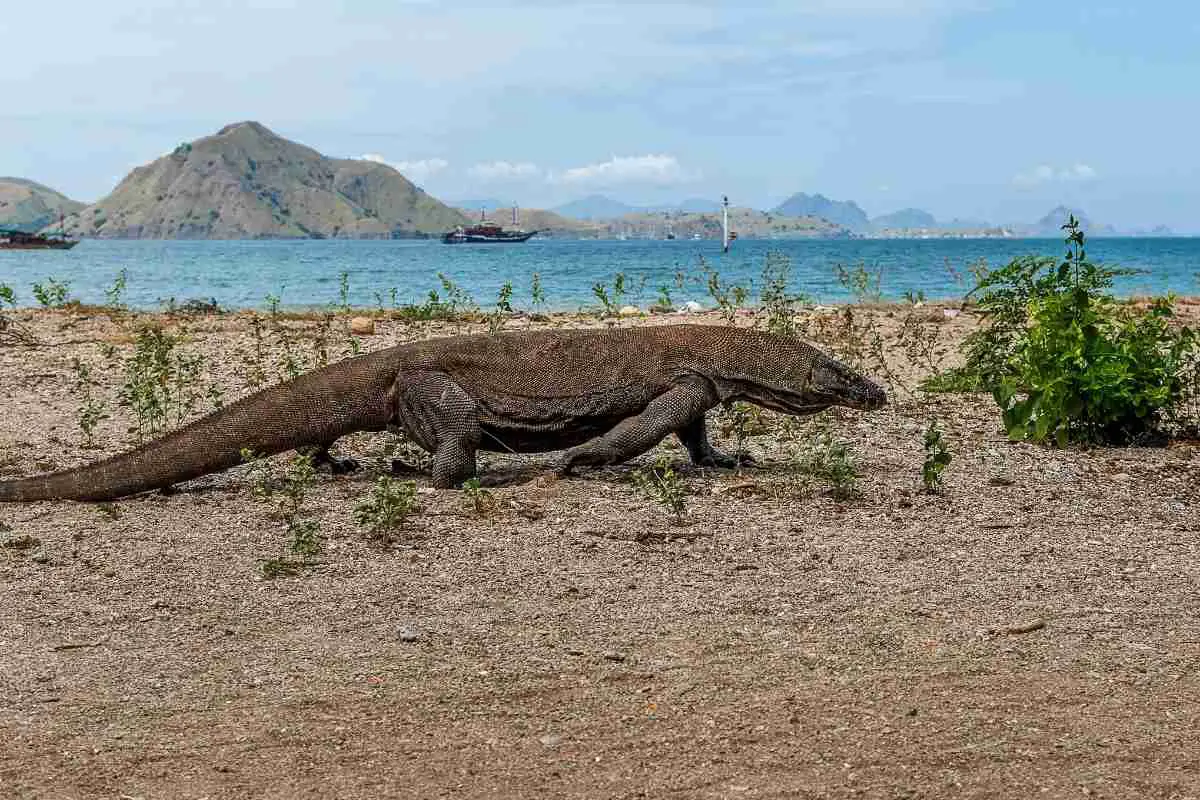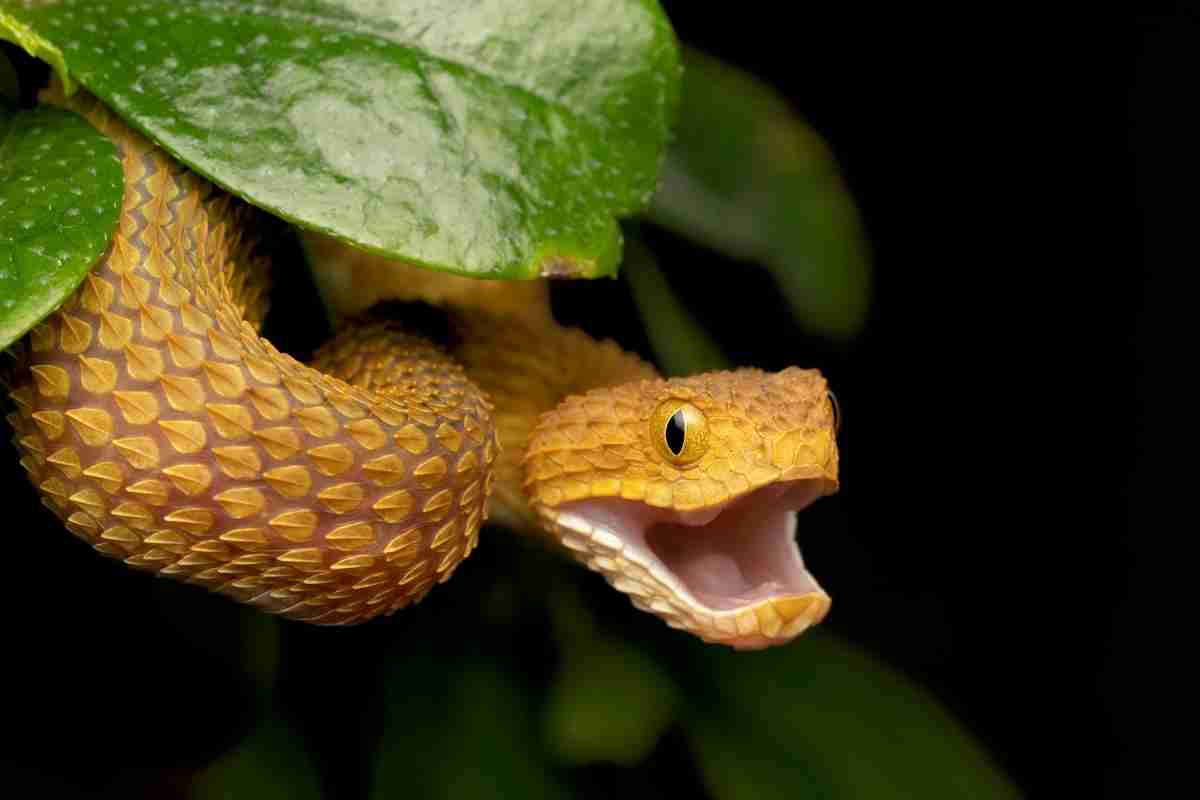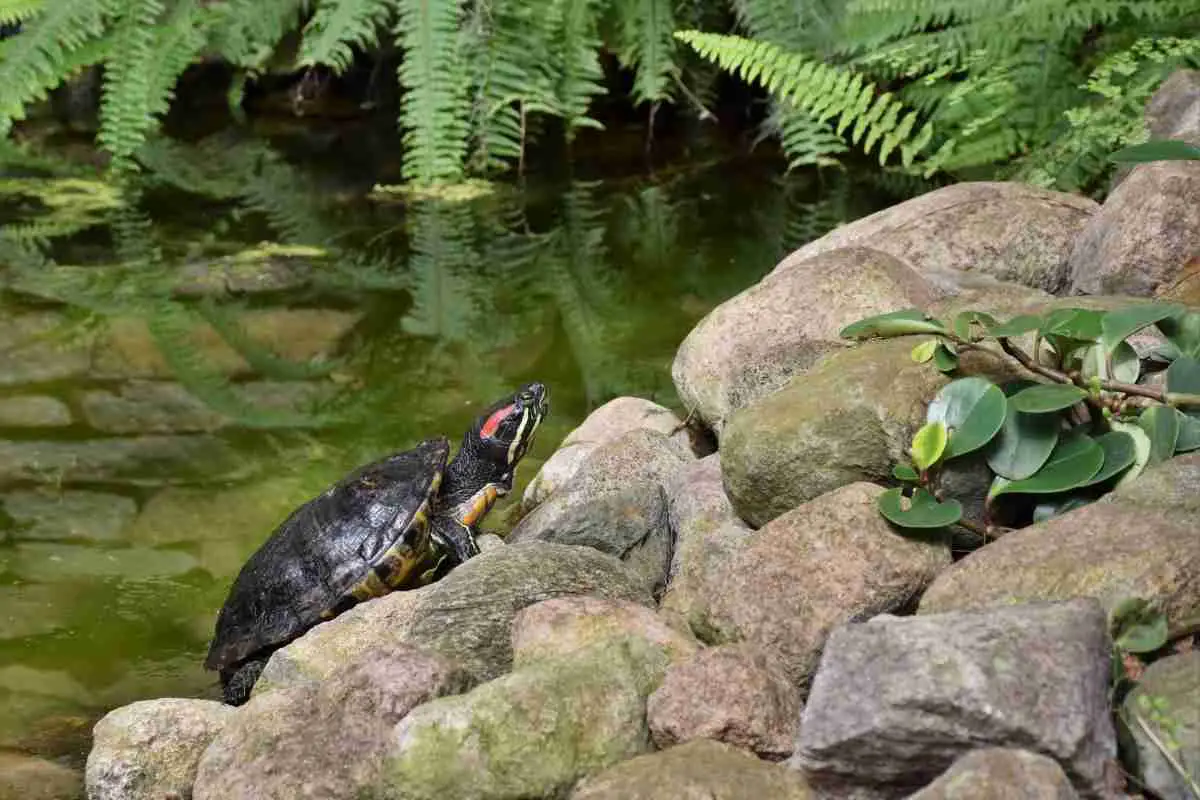Yellow Belly Turtles are a type of turtle that originates from the central and southern parts of the United States. They have yellow stripes on their belly, hence the name, and spend most of their life in freshwater habitats. But, how big do yellow belly sliders get?
The average size of a mature adult yellow belly slider ranges from 5–9 inches (13–23 cm) in length females range from 8–13 inches (20–33 cm) when they’re fully grown!
The size of the yellow belly turtle really depends on many factors including their age, diet, habitat, gender, and UVB Light! that’s right? even UVB lights can play a part in the growth. So in this blog post, we will focus on how the size of a slider changes based on these three factors.
What Affects Their Growth?
Their diet and habitat will affect their growth rate in weight, length, and width. Yellow belly slider turtles are omnivorous, which means they can eat a wide range of meat and vegetables.
For example, when they’re grown in an aquarium environment with plentiful food sources like crickets they’ll grow significantly faster than if they were native to a wetland system where there are fewer available resources for them to consume (which means that yellow bellies would naturally be smaller).
They also grow as quickly if you keep feeding them protein because it gives them a healthy boost in their digestive systems which is responsible for the growth of the turtle.
However, all these foods served their own won’t help much with the turtle’s growth, for example, berries are a great way to get your daily dose of vitamins and nutrients, but they don’t offer much for growth directly. But mixed together and they can aid in bone and brain development.
Also, turtles that are found in the more temperate region will grow larger than one living in an extremely cold climate. Additionally, turtles fed by humans tend to be much smaller than those who are naturally feeding themselves.
Related Article:
Age
The age of the turtle will also affect its size. Turtles that are younger than two years old do grow rapidly in their weight, but as they get older their growth slows down significantly.
This is because turtles who live on land or near the shoreline need more food sources and larger habitats in order to stay healthy. That’s why you see smaller turtles closer to these areas.
The hatchlings of the yellow-belly slider turtle are typically between 2 and 3 inches in length. However, this will change very quickly as they start to grow. But as this little guy gets older, it could take anywhere from 12 to 18 months for him to add another inch on his shell.
Turtles become bigger the older they get. The reason for this is that when a turtle gets to be more mature, it will have fewer predators and can therefore reach its full size.
For example: if you think about how big turtles are now in comparison to what their babies were as hatchlings, there’s no denying that with age comes growth!
Gender
Male turtles will grow faster than females. This is because they have a higher metabolic rate, which means that their body needs more nutrients to maintain them.
However, the size of female yellow belly sliders are slightly bigger than the males when fully grown (usually between 12-18 inches in length). But again this all depends on how much food sources are available for the turtle to consume or if there’s an abundance of predators nearby!
If a female turtle is pregnant, it’s impossible for her belly to get bigger so she needs more space than males do! This is why females of their species are generally larger in size and when you see them they’re usually much rounder as well.
UVB Light
Turtles can be seen basking in the sun, and that’s because they need UVB light to produce Vitamin D3. This is essential for their calcium levels which will help them develop strong shells as well as healthy bones.
Slow growth is a possibility for turtles that don’t have access to UVB light. Turtles in the wild will usually search until they are able to find places with plenty of exposure to this type of sunlight, but these conditions aren’t available everywhere in the world.
A turtle’s size isn’t just based on genetics: their diet, age, gender, habitat, and access to UVB radiation all play an important role in determining how big they’ll get over time.
Keep these things in mind when caring for one of these incredible animals – you might be surprised at how many different factors come into play while keeping them happy and healthy!
Now there are some other things outside of food sources that can also affect how these reptiles grow! So let’s take a look at some other factors below that could affect the growth of a turtle.
Abnormal Shell Growth
There can be many reasons why turtles have Irregular shell growth but mainly it can be down to their diet. If they are not getting the right nutrients from their food.
One of the most common causes is an improper diet as turtle’s need a variety of different foods in order to grow into healthy adults. They should be fed everything from fruits and veggies to protein sources like fish so that they can get all the required vitamins and minerals!
Vegetables that block calcium absorption can be a real problem for younger turtles. This usually happens when you feed your reptile just one type of veg this is why it is very important for them to have a balanced.
If your turtle shell has started to grow abnormal (shell deformity) then you should contact a veterinarian who is experienced working on reptiles like these to avoid it getting worse!
The other reason why turtles might not reach their full-size potential is because of predators – especially those who live near water or on land near shorelines which stop them from finding the proper nutrients they need.
Turtles with this problem usually only weigh around 20 pounds when fully grown which makes it difficult for them to stay strong enough during the mating season since females tend to outweigh males by about 30%.
Related Article:
How Long Do They Take To Fully Grow?
The yellow-bellied turtle is a fascinating creature. They start out tiny, no bigger than the size of your palm, and could end up being 5 to 13 inches long when fully grown. However, It typically takes around 8 to 10 years for yellow belly sliders to reach full maturity.
But again the length of time that it takes for a Yellow Belly Slider to fully grow will depend on their gender, the temperature at which they live, and whether or not they have been exposed to light during this time period.
It takes a long time for these reptiles to become physically mature, and the males usually grow faster than females. Once they are around 10 years old, most of them won’t get any bigger. Females take longer than males to reach maturity too so their growth is also slower in comparison with male yellow-bellied slider turtles.
Wild Vs Pet Size
There are a few major differences between male and female yellow-bellied sliders that you should be aware of – mainly when it comes to the size. Females might weigh around 15 pounds or more which is much less than males who generally weigh in at about 30 pounds!
Females also have an extra tail notch on their back end so they can carry eggs well, and the males lack that part because they don’t lay eggs as females do.
Males typically grow taller too as opposed to shorter with age due to this being just one way where reptiles differ from each other in terms of gender expression for reproductive purposes.
Conclusion
So now you know how big do yellow belly sliders get? hopefully, we have answered all the questions you might have about how big yellow belly sliders get and the factors that affect how big they grow.
We have also gone over the difference between male and female yellow-bellied sliders too since it can be a sensitive topic for some people to talk about!
If you own a turtle and think that the size is not quite right then you should visit a vet just to check that everything is ok.
It could just be down to what you are feeding your tiny reptile if this is the case then you should look for information on your species of turtle eats and how to provide them a balanced diet.




